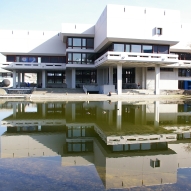| Lizenz: Creative Commons Namensnennung 3.0 de PDF - Veröffentlichte Version (1MB) |
- URN zum Zitieren dieses Dokuments:
- urn:nbn:de:bvb:355-epub-258411
- DOI zum Zitieren dieses Dokuments:
- 10.5283/epub.25841
Alternative Links zum Volltext:DOI
Zusammenfassung
An example of proactive control is the usage of informative cues to prepare for an upcoming task. Here the authors will present data from a series of three experiments, showing that positive affect along with low arousal reduces proactive control in form of a reduced reliance on informative cues. In three affect groups, neutral or positive affective picture stimuli with low and high arousal ...

Nur für Besitzer und Autoren: Kontrollseite des Eintrags



 Downloadstatistik
Downloadstatistik